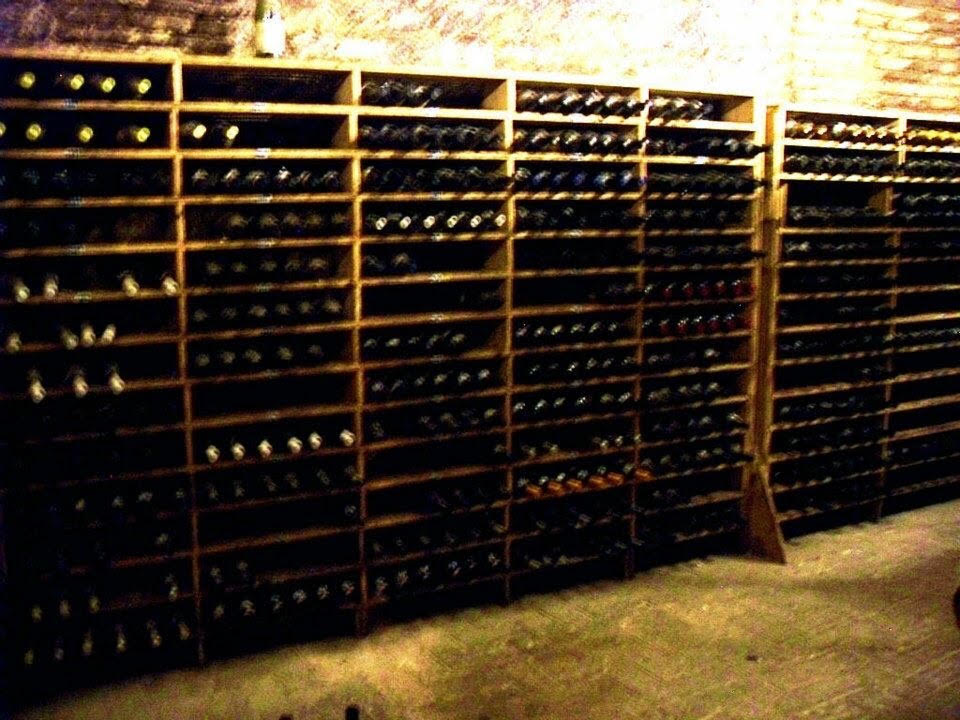Internationally, one of the most popular alcoholic beverages, wine is available in a variety of styles and qualities I like to refer to as Fine Wine or Swine Wine. Fine wines and mass-produced wines or swine wines, are the two main categories of wine. Despite their outward similarity, there are significant differences between the two. Let’s look at some distinctions between fine wines and swine wines.
Most Notable Difference between Fine Wine and Swine Wine
The art of winemaking is a fascinating dance with nature, where vintners become artists, crafting each bottle of fine wine with meticulous care. These wines capture the essence of their terroir, a French term that refers to the unique combination of soil, climate, and landscape that imparts distinct characteristics to the grapes. The aging process further enhances the depth and complexity of flavors, creating a symphony for the palate that resonates with the rich history of its origin. Indeed, each sip is a celebration of tradition and innovation entwined.
The art of winemaking is truly fascinating! Fine wines are crafted from grapes that are not just grown but nurtured with meticulous attention to detail. These grapes are the stars of select vineyards across the globe, where every aspect of their growth contributes to the depth and complexity of the wine’s flavor. It’s this careful cultivation that distinguishes a premium wine, offering a symphony of flavors—from the subtle notes of fruit to the bold accents of spice and the grounding touch of earthiness. Cheers to the winemakers who create these masterpieces in a bottle!
Ah, the world of wine, where ‘mass-produced’ often means ‘made with the enthusiasm of a tax auditor’. These wines are like pop songs: catchy, predictable, and overplayed on supermarket speakers. They’re the ‘fast food’ of the wine world – easy to gulp down but unlikely to be remembered. On the other hand, aged wines are like classic novels, gaining character and prestige with every passing year, turning sipping into a sophisticated time travel experience. Cheers to complexity and a bouquet that’s more intriguing than my last attempt at assembling furniture! 🍷
Differences in the Additives Used in Fine Wines Compared to Mass-Produced Wines
The art of winemaking is truly fascinating, especially when it comes to fine wines. These treasures are crafted with a gentle touch, allowing the inherent qualities of the grapes to shine through. It’s a delicate balance, where each decision by the vintner is guided by tradition and intuition. The result? A bottle that not only holds wine but also the essence of the place and the passion of its maker. It’s no wonder wine enthusiasts cherish these bottles, each sip a testament to the art of minimal intervention. Cheers to the winemakers who create such masterpieces!
In the whimsical world of winemaking, it seems that swine wines are the new Picasso of the vineyard, dabbling in a palette of additives to create their masterpiece. Sugar to sweeten the deal, acid to add a zesty zing, tannin for that touch of bitterness, and a splash of artificial flavors and colors to bring the rainbow into the mix. It’s like a winemaker’s version of a spice rack, ensuring every bottle is a consistent concoction, no matter what the grapes were gossiping about that year. So, let’s cheer to the grape alchemists!
Differences in the Production Techniques Used for Fine Wine and Swine Wine
The art of winemaking is fascinating, especially when considering the different approaches to grape harvesting. Premium wines are often the product of meticulous care and selective harvesting in vineyards where every grape counts. In contrast, mass-produced wines come from a more industrialized process, focusing on quantity over the wine’s unique qualities. It’s a testament to the diversity of the wine industry.
In the whimsical world of wine, there’s a grape divide. It is between the handcrafted “boutique” bottles and the high-octane production of “vino on a budget.” Picture this: a vineyard so vast, it’s like the grapes enlisted in an army of efficiency. They march in line to the rhythm of machines. These grapes are unsung heroes. They brave the elements and the assembly line to bring joy to dinner tables and picnics worldwide. While they might not have the complex backstory of their artisanal cousins, they’re the foot soldiers in the battle against a dry gathering. Cheers to the grapes that keep our glasses half full!
More on Production Techniques
The creation of fine wines is truly an art form. Hence, meticulous attention to detail and a commitment to excellence are paramount. The careful selection of the perfect terroir and the sustainable cultivation of grapevines prove the dedication to quality. The result is a symphony of flavors, a celebration of unique grape varieties that capture the essence of their region. Finally, this labor of love culminates in the exquisite pleasure of a glass of fine wine, savored by all.
Ah, the secret life of grapes and their oak barrel pals! Think of it as a fine dining experience for fruits. The later they’re picked, the more sun they’ve soaked up, gossiping with the vines. And those oak barrels? They’re like the seasoned chefs of the wine world, infusing the grapes with wisdom and a hint of vanilla-spiced sass. Timing and taste tango to create the perfect sip!
Differences in the Grapes Used for Fine Wine and Mass-Produced Wine
Fine wine grapes differ from mass-produced wine grapes in many different ways. As a result, these wines frequently originate from grapes of high quality grown in select vineyards. They typically control the yields with focus on the terrain. The grapes used in this production usually come from older vines with smaller harvests and more concentrated flavors. Mass-produced wines, on the other hand, tend to come from high-yielding vineyards with no regard for geography or vine age. The focus tends to be on producing a massive number of grapes rather than the quality of the fruit. This could result in wines that are simpler and less complex, lacking the depth and character found in excellent wines.
Life Cycle Differences
The art of winemaking is a fascinating blend of tradition and science. Every step, from the selection of the grape to the aging process, contributes to the wine’s final character. Fine wines are a testament to the dedication of winemakers who meticulously nurture their vineyards. Subsequently, they master the delicate balance of elements to create these liquid masterpieces. With each sip you can taste the rich flavors and the storied history and passion that go into every bottle. It’s a luxurious experience that goes beyond mere consumption, inviting connoisseurs to savor a moment in time.
Fine wine and swine wine have very different life cycles. Fine wines age for a longer period of time, frequently in oak barrels. This allows for greater complexity and depth of taste to develop. In contrast, mass-produced wines offer a consistent and accessible option for casual consumption.
The world of wine is fascinating, with fine wines often crafted in limited batches. This contributes to their exclusivity and higher price points. Cherish these wines for their ability to mature over time, developing complex flavors that connoisseurs appreciate. Mass-produced wines provide immediate consumption, offering a more accessible option for everyday enjoyment without the need for long-term storage. Whether for a special occasion or a casual dinner, there’s a wine out there for every moment and budget.
Differences in Storage Methods for Fine Wine and Mass-Produced Wine
Prior to distribution, fine wine and swine wine are stored in significantly different ways.

Wine cellars are indeed a marvel of wine preservation, offering the perfect sanctuary for the aging process. Hence, the steady, cool temperatures and controlled humidity create an ideal environment allows wines to mature gracefully. This enhances their complexity and character. Storing bottles on their sides ensures the cork remains moist, preventing unwanted air from spoiling the wine’s integrity. These meticulous details can turn a good wine into a great one.
Ah, the swine wines, the unsung heroes of the casual drinker! They stand tall and proud, not needing the coddling of a temperature-controlled cellar or the gentle caress of a cork. And let’s not forget the convenience of that screw cap—no corkscrew, no problem! Meanwhile, the finer wines are like high-maintenance celebrities, demanding the perfect environment to develop their award-winning personalities. Cheers to that!
We are available for contact regarding this (or anything related to this Community Information System). See how by CLICKING HERE!




